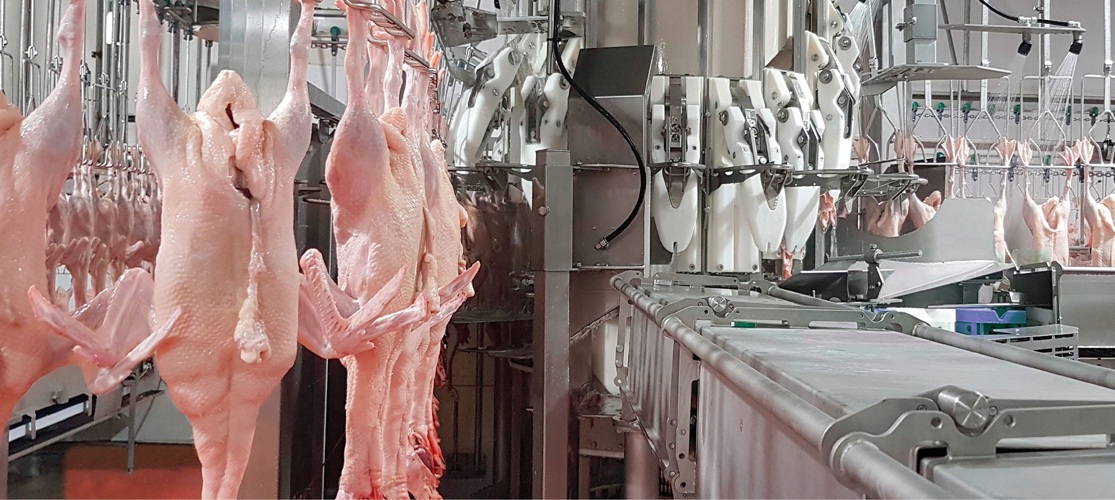Viscera & by-products
Looking at viscera and by-products, Jos Spaan says, “Regional differences might look small but can be very critical for the way a duck is processed. For example, in the Western world, necks and tongues are considered by-products, but on the other side of the globe, these products bring in the money. Necks need to be long, giving optimum yields. The same goes for tongues, also a very valuable product in Asia but only when the little tendons are still connected. Such small details are quite important when processing ducks.”
Polyvalent processing
“With so many different markets and requirements, it is a challenge for duck processors to produce all the different kinds of products on the same polyvalent line. There are no dedicated griller lines or dedicated HOFO lines. Ducks are routed through the evisceration process to their eventual destination. Based on quality, weight and end product, certain ducks will by-pass certain steps in the evisceration process. A HOFO duck, for instance, with neck and head on will by-pass operations to crack necks and clean neck skins. Where chicken products diverge in the secondary part of processing, duck products already diverge before evisceration,” continues Jos Spaan.






